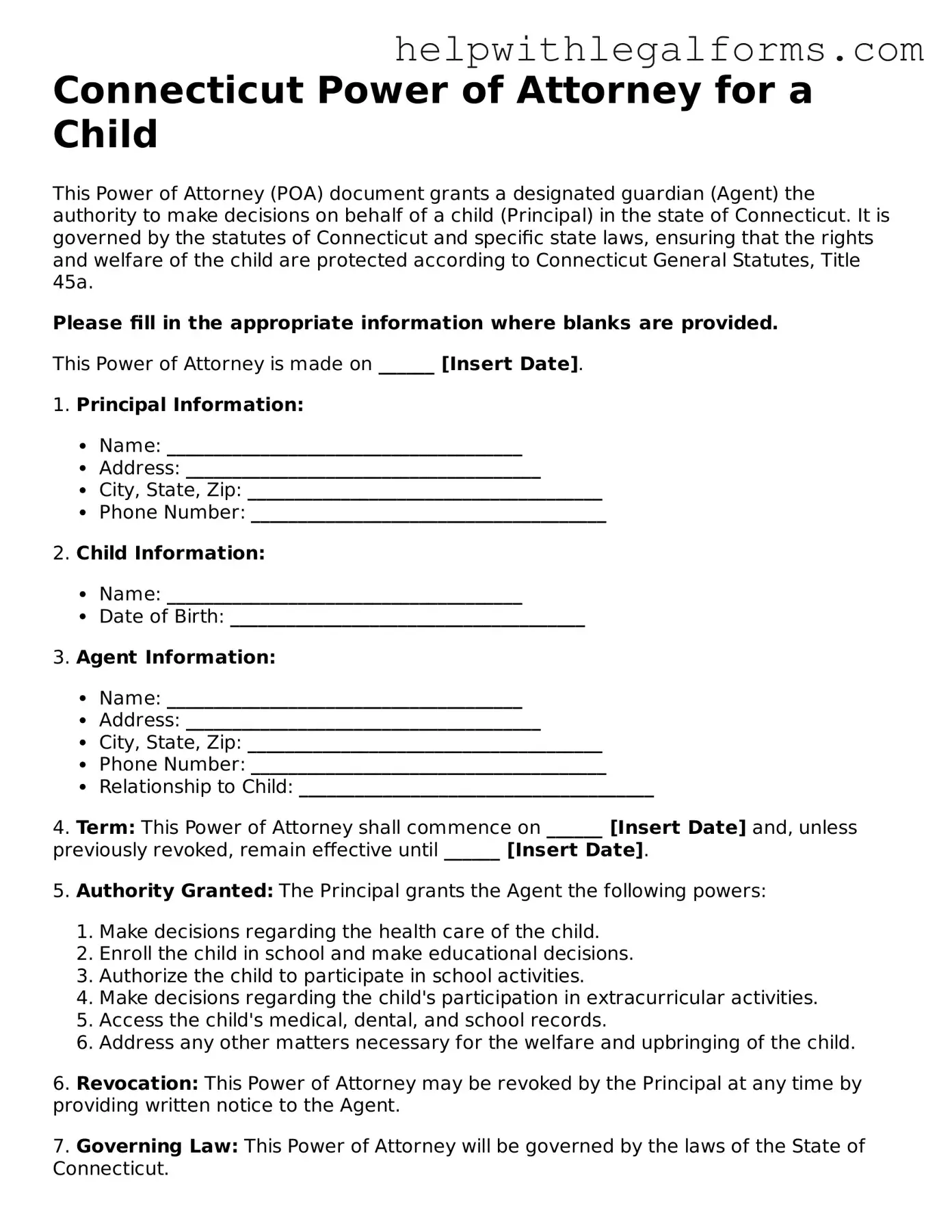Connecticut Power of Attorney for a Child
This Power of Attorney (POA) document grants a designated guardian (Agent) the authority to make decisions on behalf of a child (Principal) in the state of Connecticut. It is governed by the statutes of Connecticut and specific state laws, ensuring that the rights and welfare of the child are protected according to Connecticut General Statutes, Title 45a.
Please fill in the appropriate information where blanks are provided.
This Power of Attorney is made on ______ [Insert Date].
1. Principal Information:
- Name: ______________________________________
- Address: ______________________________________
- City, State, Zip: ______________________________________
- Phone Number: ______________________________________
2. Child Information:
- Name: ______________________________________
- Date of Birth: ______________________________________
3. Agent Information:
- Name: ______________________________________
- Address: ______________________________________
- City, State, Zip: ______________________________________
- Phone Number: ______________________________________
- Relationship to Child: ______________________________________
4. Term: This Power of Attorney shall commence on ______ [Insert Date] and, unless previously revoked, remain effective until ______ [Insert Date].
5. Authority Granted: The Principal grants the Agent the following powers:
- Make decisions regarding the health care of the child.
- Enroll the child in school and make educational decisions.
- Authorize the child to participate in school activities.
- Make decisions regarding the child's participation in extracurricular activities.
- Access the child's medical, dental, and school records.
- Address any other matters necessary for the welfare and upbringing of the child.
6. Revocation: This Power of Attorney may be revoked by the Principal at any time by providing written notice to the Agent.
7. Governing Law: This Power of Attorney will be governed by the laws of the State of Connecticut.
8. Signatures:
I, ______ [Principal's Name], the parent/legal guardian of the above-named child, hereby appoint ______ [Agent's Name] as my attorney-in-fact to act on behalf of my child as specified in this document.
Principal's Signature: _______________________________________
Date: ___________________
Agent's Signature: _______________________________________
Date: ___________________
Witness's Signature: _______________________________________
Name: ______________________________________
Date: ___________________
State of Connecticut )
County of _________ ) Sworn to and subscribed before me on this day, ______ [Insert Date], by [Principal’s Name] and [Agent’s Name].
Notary Signature: _______________________________________
Notary Printed Name: ______________________________________
Commission Expiration: ___________________
